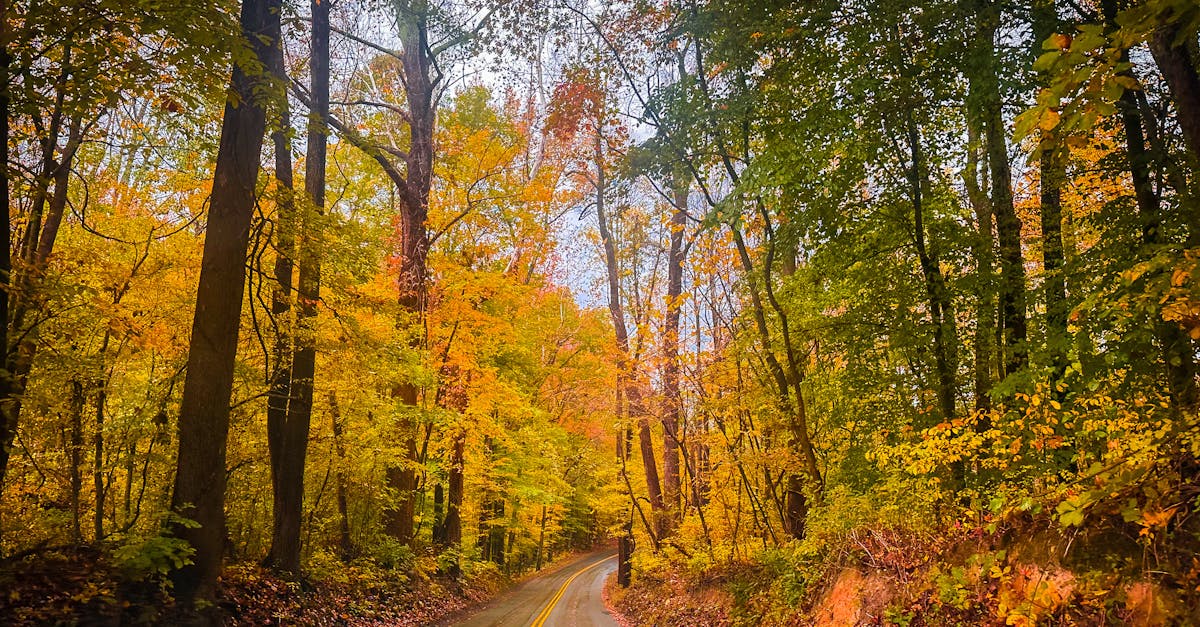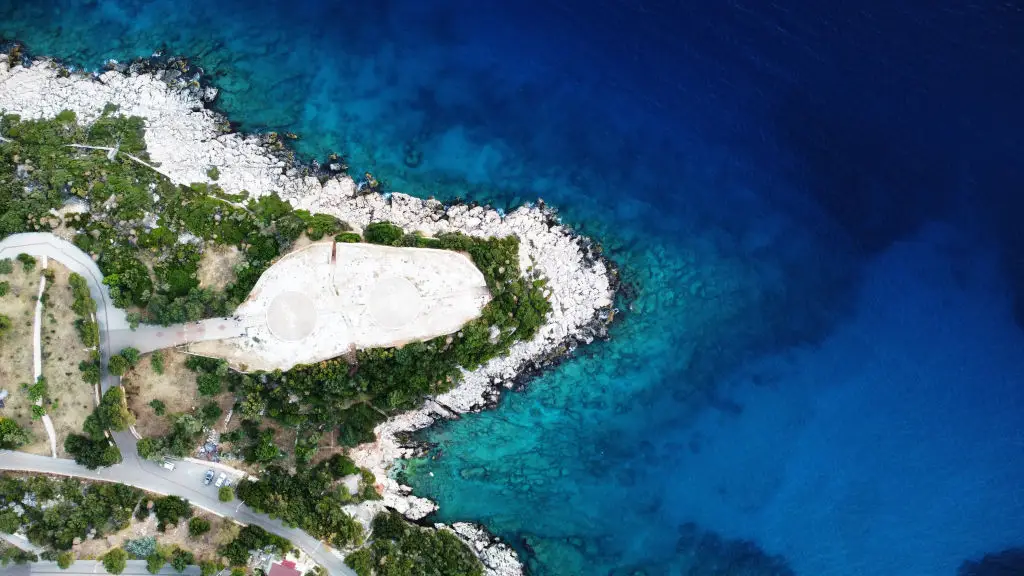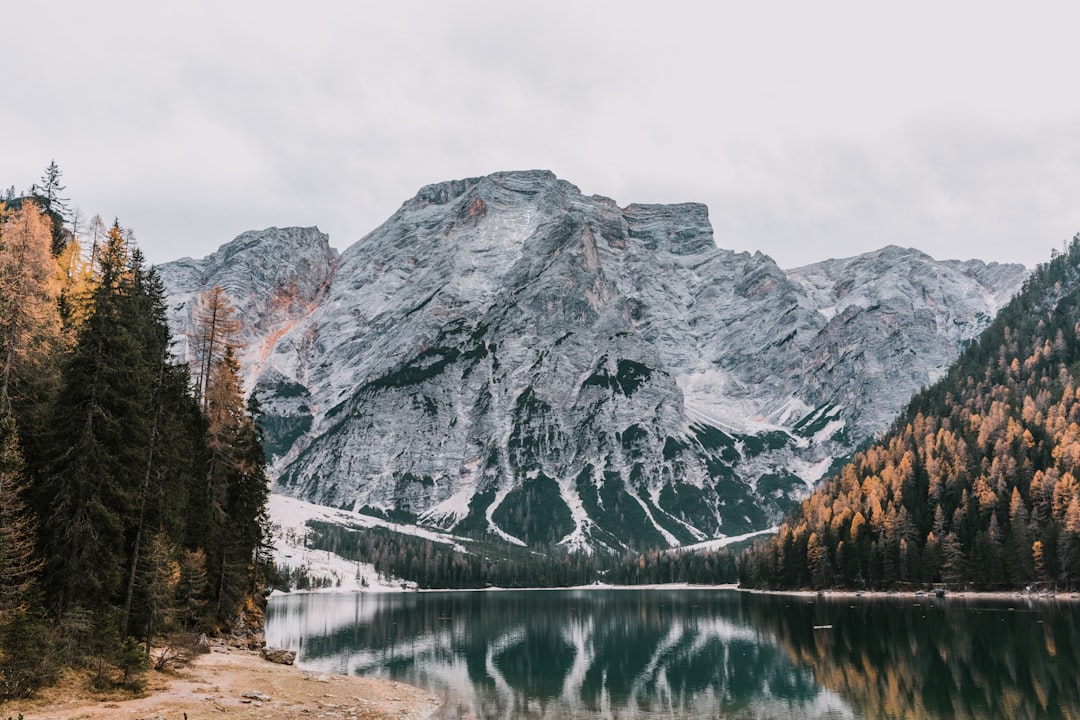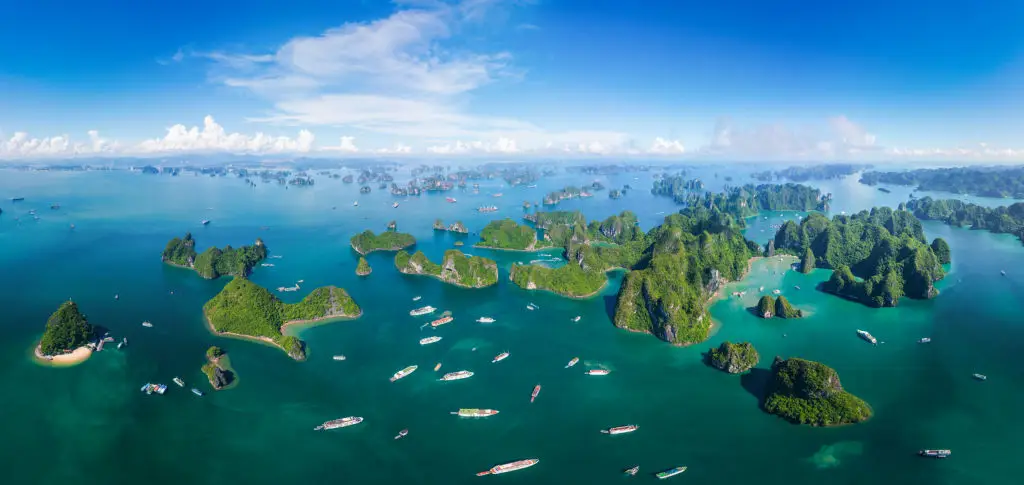12 Iconic Landscapes Only Found in Africa's Remote Corners
Africa stretches farther than most maps suggest, revealing landscapes that seem born from another planet. While many travelers flock to the continent’s famous destinations, those willing to journey off the grid find wonders that can’t be experienced anywhere else on Earth. These remote gems tell stories etched in ancient stone, painted in dazzling colors, and whispered through winds that have traveled for eons. Each one holds something rare—a blend of geological drama, life adapted for survival, and cultures deeply connected to place. For North American adventurers seeking fresh territory and soul-stirring scenery, Africa’s wildest corners promise something profound. These aren’t backdrops for casual sightseeing but realms where the familiar rules of nature and time feel delightfully suspended. Expect to cross deserts wider than some countries, climb peaks that pierce the clouds, or stand at the edge of volcanic cauldrons glowing under the open sky. This list spotlights twelve extraordinary landscapes, each selected for its sheer uniqueness, sense of adventure, and the rare privilege of their remoteness. From verdant canyons to lunar salt flats, from volcanic summits to sunken lakes, every destination invites awe—and respect. If you crave sights few have witnessed and seek meaning beyond the guidebook’s pages, read on. These twelve wonders reveal Africa’s most iconic, less-traveled faces, each a testament to the continent’s enduring, untamed spirit.
1. Ennedi Plateau, Chad: Saharan Sandstone Cathedrals
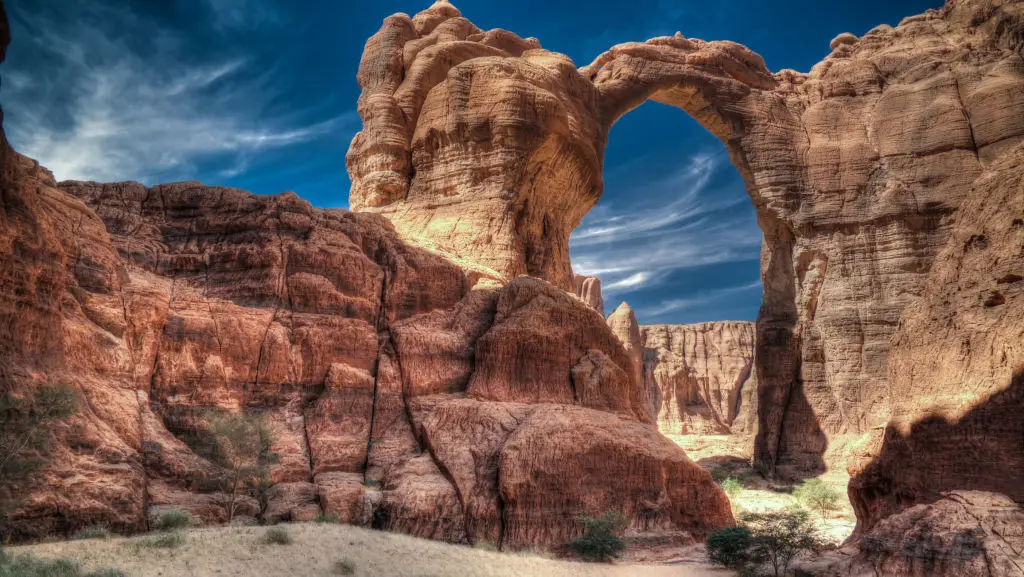
Tucked deep within northeastern Chad, the Ennedi Plateau stuns those who make the trek across desert horizons. This UNESCO World Heritage site is a masterpiece of wind-carved sandstone, its towering arches and spires forming a natural cathedral in the heart of the Sahara. Vivid sunlight accentuates every jagged curve and canyon, illuminating ancient rock art that chronicles millennia of nomadic life. Locals, mainly Toubou and Berber nomads, consider the area culturally sacred, guiding their herds through seasonal routes unchanged for generations. Travelers who reach the Ennedi experience absolute silence, broken only by the call of desert birds or camel caravans in the distance. With its isolated camps and labyrinthine gorges, the plateau is a beacon for adventurers in search of raw, untouched grandeur. Rare crocodiles still linger in its gueltas—desert waterholes suspended between rock walls—a living link to wetter ages past. The Ennedi’s remoteness fosters its own wild charm, making every visit a genuine expedition rather than a casual tour.
2. Lake Turkana, Kenya: The Jade Sea
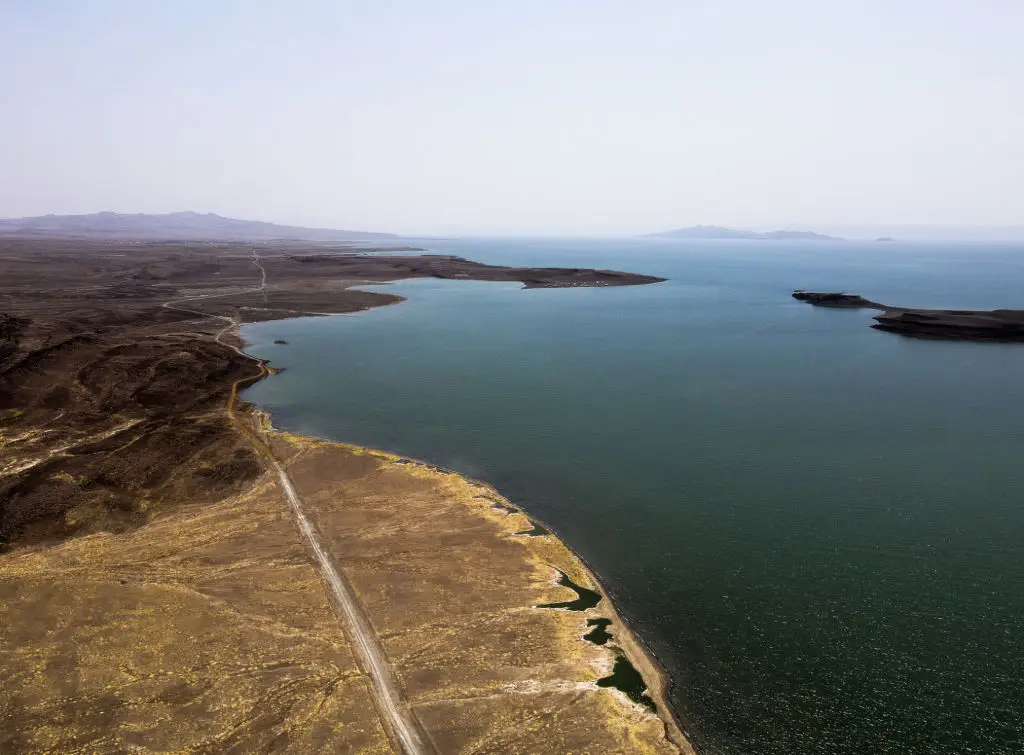
In the far-flung expanses of northern Kenya lies Lake Turkana, often called the Jade Sea for its deep turquoise waters that shimmer amid volcanic deserts. It’s the world’s largest permanent desert lake, a lifeline for people and wildlife in an otherwise harsh environment. Frontier landscapes sweep toward the horizon, revealing shores dotted with petrified forests and volcanic islands. Lake Turkana hosts a remarkable ecosystem, supporting enormous Nile crocodiles and endemic fish species found nowhere else. Archaeological sites along its shoreline reveal evidence of some of humankind’s earliest ancestors. For modern travelers, the area offers a rare glimpse into both ancient and contemporary life, with pastoralist communities skillfully navigating its challenges. The journey to Turkana demands stamina—it’s remote, sun-baked, and wind-swept—but the reward is a sense of standing where the world began, surrounded by a lake so striking it feels almost mystical.
3. Richat Structure (Eye of the Sahara), Mauritania: Africa’s Giant Spiral
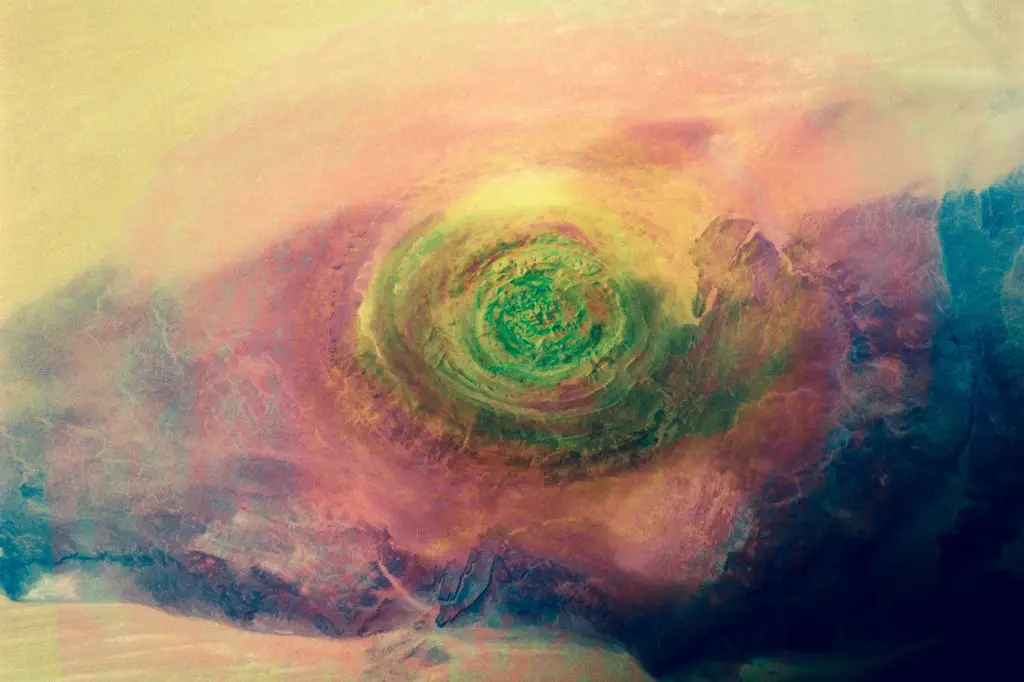
Visible from orbit and enigmatic even on the ground, Mauritania’s Richat Structure—nicknamed the Eye of the Sahara—is a geological marvel like no other. This vast, circular formation spans nearly 30 miles across, comprised of concentric rings of rock unfolding in the desert. Scientists believe the structure formed through an ancient uplift and erosion process, though elements of its origins remain mysterious. Bedouin stories swirl around the Eye, attributing mystical powers or ancient civilizations to its spiral patterns. Its stark isolation, deep in the Saharan wilderness, adds to its allure. There are no roads leading directly here; most adventurers rely on experienced guides and sturdy vehicles to navigate the sand seas. Images captured from space often spark curiosity among aspiring explorers, but standing at its rim, visitors experience an overwhelming sense of scale and wonder. Richat’s haunting symmetry has inspired both scientists and storytellers alike.
4. Simien Mountains, Ethiopia: Peaks Above the Clouds
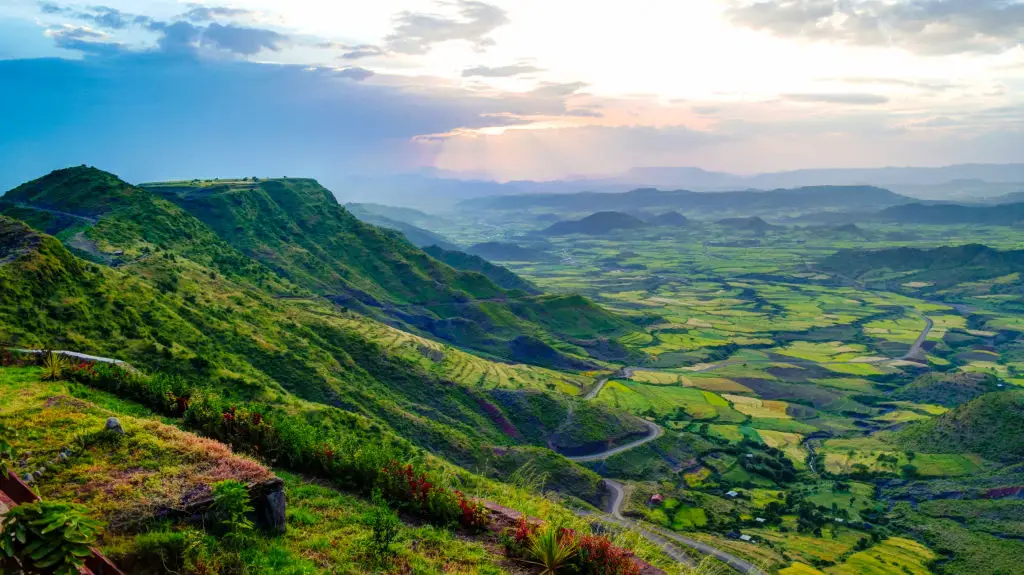
Northern Ethiopia’s Simien Mountains rise with a grandeur that feels more Himalayan than African. Razor-sharp cliffs and deep valleys cut through high-altitude grasslands, often shrouded in drifting clouds or lit by shafts of golden sunrise. Home to a trio of rare mammals—the gelada baboon, the Walia ibex, and the Ethiopian wolf—the Simien Mountains are famed for their biodiversity. Ancient villages perch atop plateaus, their inhabitants practicing farming traditions passed down for centuries. Trekkers from around the world journey here for epic multi-day hikes, scaling peaks over 14,000 feet and traversing highland fields alive with wildflowers. As a UNESCO World Heritage site, the region’s protection allows both nature and culture to thrive, ensuring future generations can continue to marvel at its wild beauty. The Simiens invite those seeking challenge, wonder, and a true mountaintop experience.
5. Blyde River Canyon, South Africa: Verdant Abyss
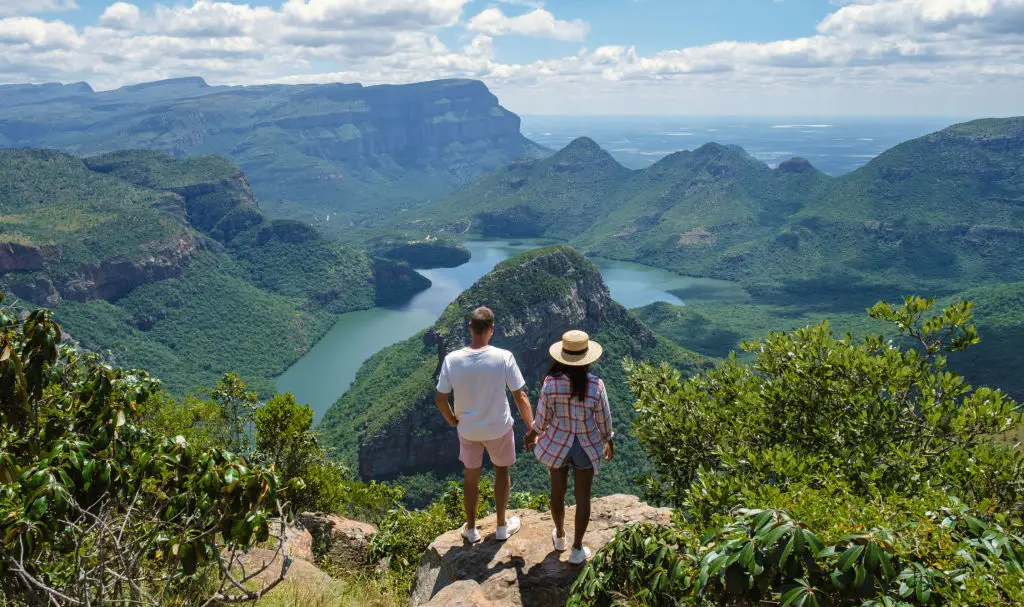
South Africa’s Blyde River Canyon is considered one of the world’s greenest canyons, a dramatic oasis carved by water and time. Lush subtropical forests blanket its towering cliffs, where lookouts reveal panoramic views—most famously at the Three Rondavels, a trio of round, hut-like mountain tops. Waterfalls tumble along hiking trails, feeding the Blyde River as it snakes through layered rock. Despite being more accessible than other spots on this list, the canyon’s sheer size and thriving plant life mean many segments remain wild and little visited. Local legends and echoes of early inhabitants add historical flavor, while well-maintained paths offer options for both day hikes and rugged adventures. Birdwatchers, photographers, and casual sightseers all find something to admire, whether it’s the morning mist on the valley floor or the canyon’s vibrant palette under full sun.
6. Danakil Depression, Ethiopia: Earth’s Hottest Wonderland
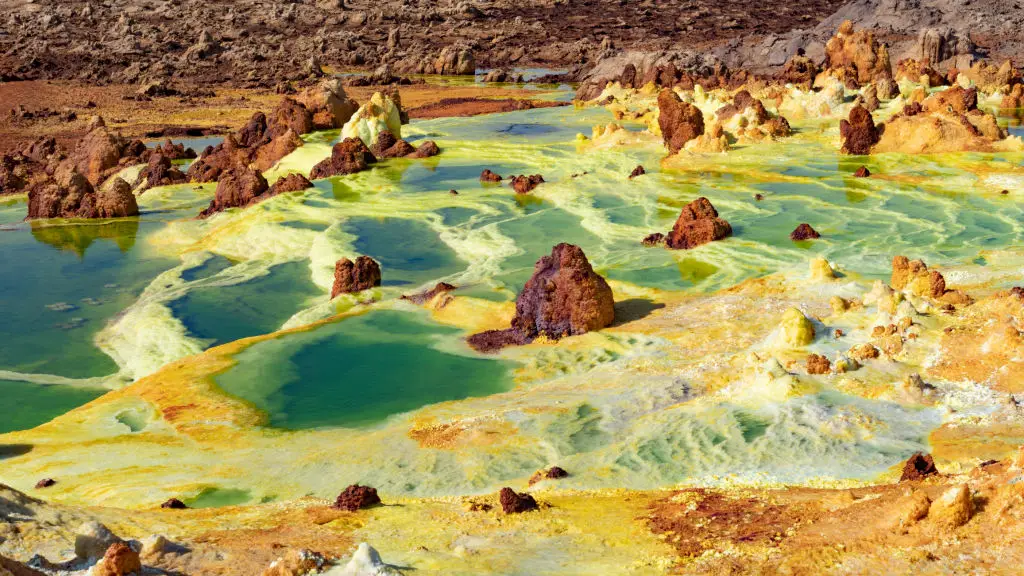
The Danakil Depression, nestled in Ethiopia's northeastern reaches, ranks among the planet’s hottest and most extraterrestrial environments. This geological cauldron plunges more than 400 feet below sea level, unveiling a kaleidoscopic world—blindingly white salt flats, bubbling lava lakes, and acid ponds in surreal, neon hues. Volcanoes like Erta Ale spew molten lava while Dallol’s hydrothermal fields burst with fluorescent mineral formations. Despite its harshness, the Afar people have adapted resourcefully, extracting salt and sharing their knowledge with the brave few who visit. Adventurers drawn here often describe it as walking on another world, a test for both body and spirit. Guides emphasize safety as extreme temperatures can reach 120°F (49°C). Those who witness its alien beauty return home changed, carrying stories no camera can fully capture. The Danakil’s silence, color, and elemental force lodge permanently in memory.
7. Makgadikgadi Pans, Botswana: Surreal Salt Flats
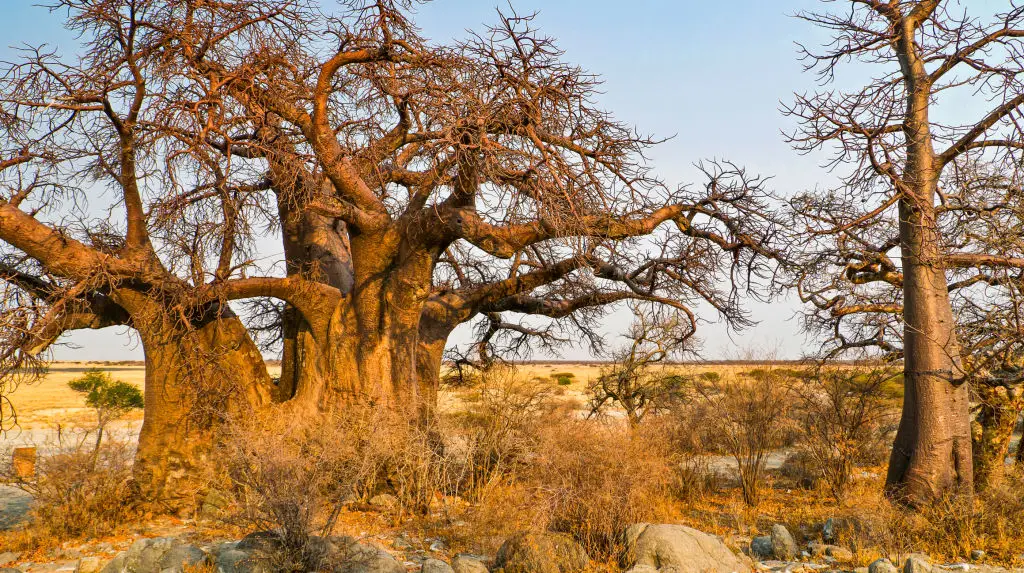
In the heart of Botswana, the Makgadikgadi Pans spread across thousands of square miles—a blinding white expanse that marks one of the world’s largest salt flat systems. These are the remnants of an ancient superlake, now transformed into a lunar-like plain where the sky feels impossibly vast. The dry season lends an eerie silence, broken only by the crunch of salt underfoot and the rustling of occasional baobab trees, some centuries old. Seasonal rains flood parts of the pans, drawing spectacular migrations of zebra and wildebeest in pursuit of fresh grazing. Northern sections hide archaeological traces of Stone Age hunting camps. Most travelers encounter the pans with a sense of quiet awe, especially at sunrise or beneath swarms of migrating flamingos. For solitude, reflection, and encounters with Botswana’s enduring wilderness, Makgadikgadi is peerless.
8. Drakensberg Amphitheatre, Lesotho/South Africa: Vertical Majesty
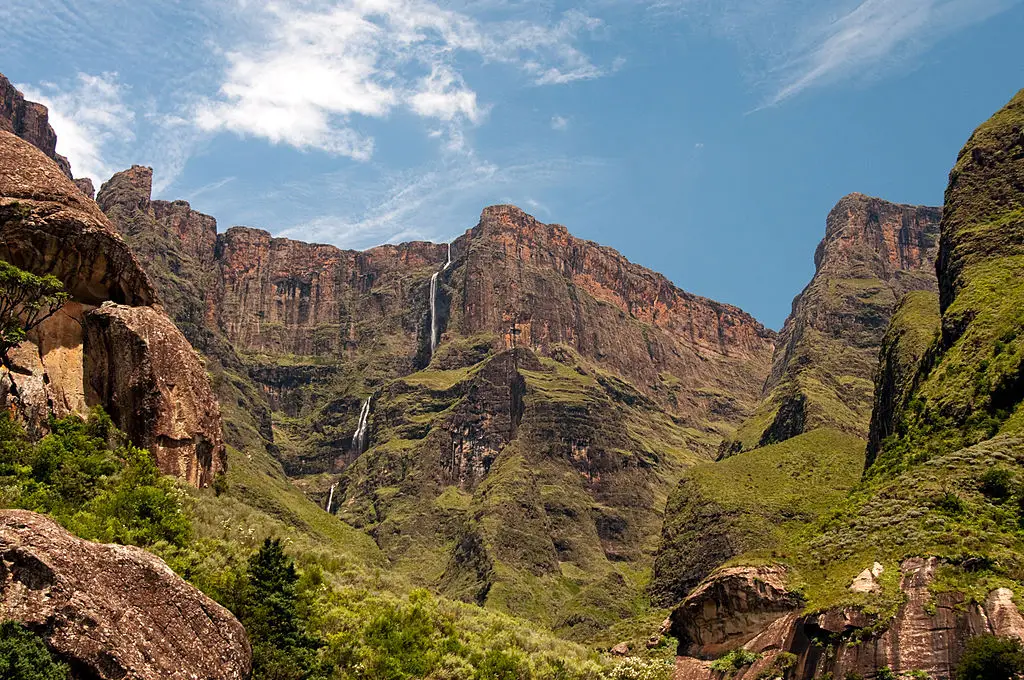
The border between Lesotho and South Africa reveals a soaring stone escarpment known as the Drakensberg Amphitheatre. Stretching for miles at heights over 1,200 meters, this sheer wall of basalt creates a sense of nature’s architecture at its most dramatic. From its heights, the Tugela Falls—one of the world’s tallest—plunge in five tiered cascades. Ancient San rock art still decorates caves, hinting at stories passed down over centuries. Trails lure intrepid hikers, rewarding effort with astonishing views of table-like summits and highland valleys. The region’s biodiversity surprises many: rare birds, endemic plants, and mountain antelope all thrive in secluded groves. Even as some parts of the Drakensberg attract day trippers, much of the Amphitheatre remains tranquil, reserved for those willing to venture beyond the well-trodden paths. It’s a destination that pays dividends to both the casual visitor and the true mountaineer.
9. Tibesti Mountains, Chad: Africa’s Fiery Heart
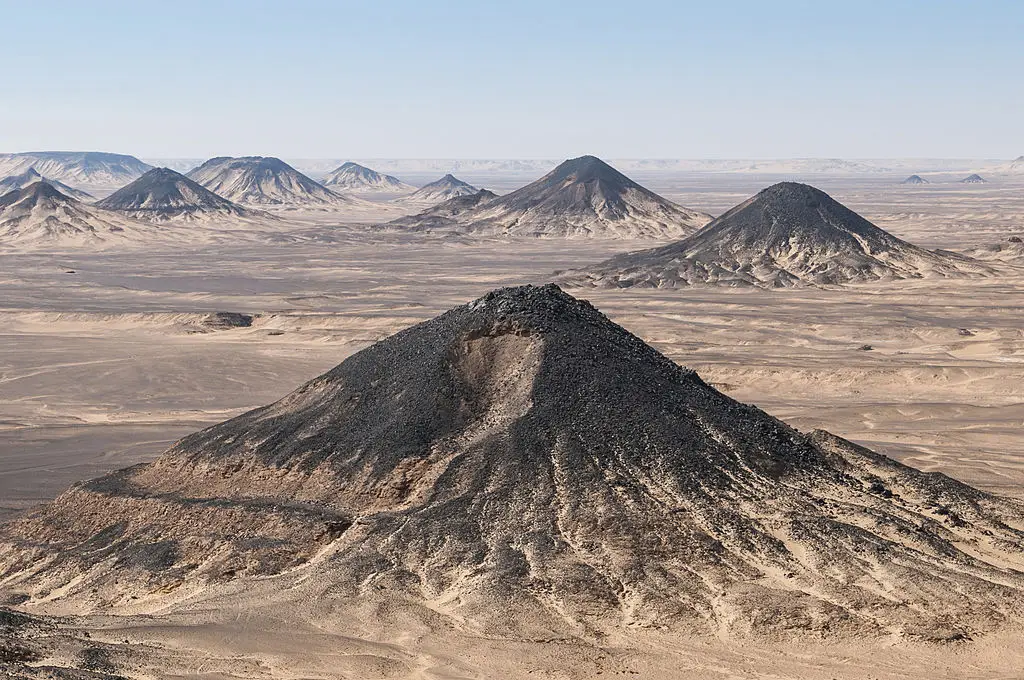
Near the border of Libya, the Tibesti Mountains thrust up from the Sahara as a volcanic wilderness few outsiders have ever seen. Famed for Emi Koussi, the highest peak in the Sahara, this region’s rugged terrain hides boiling hot springs, volcanic craters, and ancient petroglyphs. The Toubou people, whose traditions are finely attuned to the harsh environment, have called the Tibesti home for generations. Isolation is Tibesti’s hallmark—only the boldest researchers, guides, and travelers pass these fiery valleys and shifting dunes. Despite the challenges, those who arrive discover a stunning palette of volcanic rock, ever-changing desert hues, and sheer independence from the modern world. Stories and legends flow from the peaks and canyons, held close by the people who live here with fierce pride. Tibesti is a land where the line between legend and landscape blurs amid wind and stone.
10. Tsingy de Bemaraha, Madagascar: Stone Forest
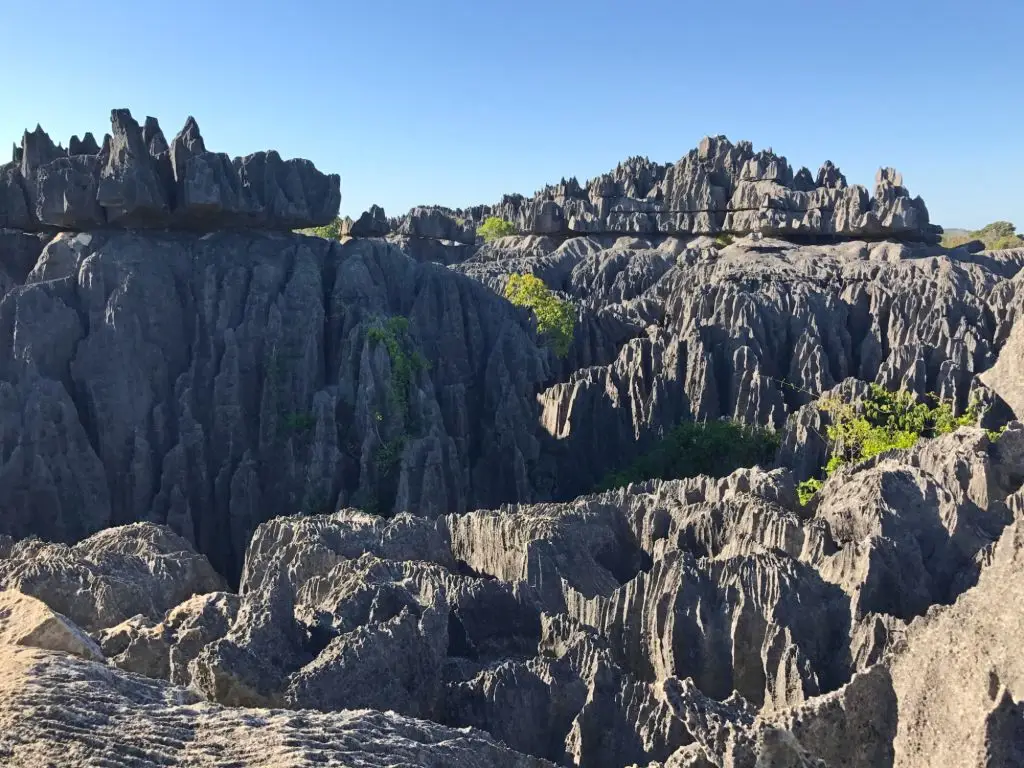
West Madagascar boasts a habitat unmatched anywhere: Tsingy de Bemaraha National Park. The “Tsingy,” meaning “where one cannot walk barefoot,” are limestone pinnacles rising like a thicket of stone spears. Erosion has sculpted these razor-sharp formations into labyrinthine corridors above hidden canyons. Lemurs, chameleons, and rare birds thrive on ledges and in microhabitats found nowhere else. Rope bridges and ladders offer the only passage for adventurous visitors, reinforcing the park’s reputation as an ultimate wilderness challenge. The region’s remoteness and ruggedness have preserved both wildlife and traditional Sakalava customs. Few make the effort, but those who do enter a world part fantasy, part geologic laboratory, and entirely unique on our planet.
11. Namib Sand Sea, Namibia: Endless Dunes
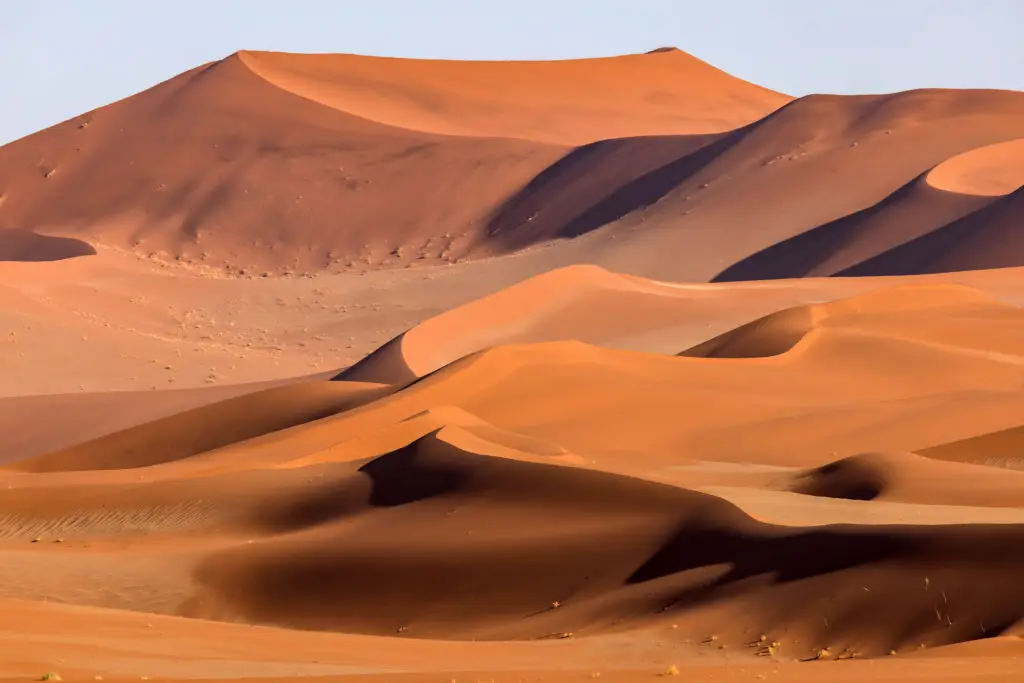
The Namib Sand Sea is both a desert and a vibrant ecosystem, stretching dune after orange dune along Namibia’s wild Atlantic coast. Some of its gigantic sand waves are thought to be among the oldest in the world, shaped by wind for millions of years. Sossusvlei—where pale salt pans form a stark contrast to crimson sand—is the destination’s most famous viewpoint, especially at sunrise. Unique plants such as the welwitschia and numerous adapted beetles and geckos have honed the means to survive in this dry world. Atmospheric shifts create ever-changing patterns of light and shadow, tempting both seasoned photographers and first-time visitors. Venture beyond the roads, and a silence deeper than expectation settles—a hallmark of true wilderness. Conservation efforts prioritize keeping human impact low, allowing the Namib’s enigmatic beauty to endure.
12. Nyiragongo Volcano, DR Congo: Lava Lake Sentinel
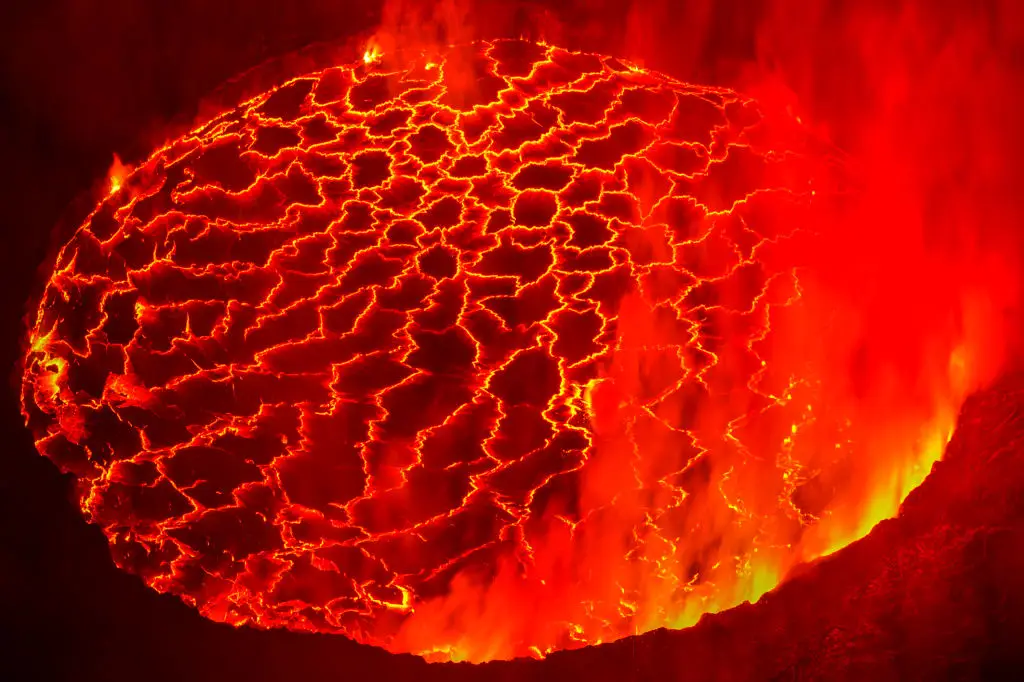
Looming over the forests near Goma, Mount Nyiragongo is one of Africa’s most active volcanoes—and the only one with a persistently bubbling lava lake. Its near-perfect cone rises above the Virunga National Park, an area of both natural wonder and complex conservation challenges. Hiking to the summit is an adventure reserved for the prepared, with guided treks traversing dense jungle and steep volcanic slopes. On clear nights, the crater glows like a window into the Earth itself, a sight both haunting and mesmerizing. The volcano’s activity has shaped local communities, influencing settlement patterns and providing both fertility and risk to fields below. Ongoing eruptions command awe but also require careful management and respect for nature’s volatility. For those who ascend Nyiragongo, the payoff is a view unlike any other—a testament to Africa’s explosive, enduring energy.
Africa’s remote landscapes defy easy summary—they stretch the imagination, test explorers, and preserve the secrets of time. Unlike famous destinations crowded with tourists, these twelve wonders retain an untouched spirit, rewarding those who venture further. Each site embodies a remarkable story, whether in the galleries of ancient rock art, the silent sweep of salt, or the spectacle of wildlife on distant horizons. Adventurers who reach these places often speak about gaining more than photos—they discover perspectives shaped by deep silence, immersive challenge, and glimpses into cultures thriving in partnership with nature. For the North American traveler seeking a break from the ordinary, these remote corners offer both privilege and responsibility. Respect for the places and communities ensures that future generations can feel the same awe, forging new links in a chain of wonder. With thoughtful exploration and open eyes, these iconic landscapes offer experiences—and memories—that linger long after the dust of travel fades.



